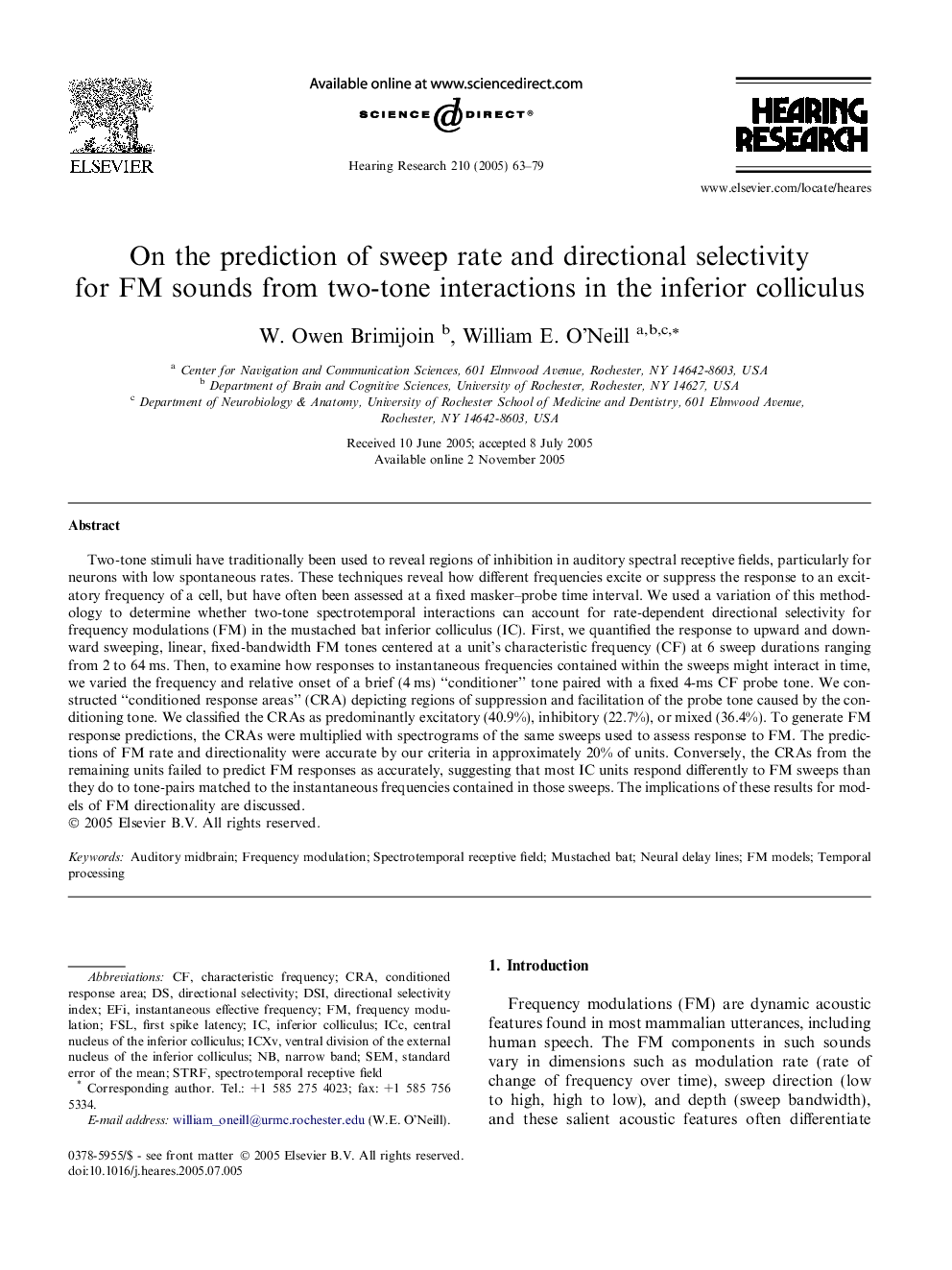| Article ID | Journal | Published Year | Pages | File Type |
|---|---|---|---|---|
| 9436445 | Hearing Research | 2005 | 17 Pages |
Abstract
Two-tone stimuli have traditionally been used to reveal regions of inhibition in auditory spectral receptive fields, particularly for neurons with low spontaneous rates. These techniques reveal how different frequencies excite or suppress the response to an excitatory frequency of a cell, but have often been assessed at a fixed masker-probe time interval. We used a variation of this methodology to determine whether two-tone spectrotemporal interactions can account for rate-dependent directional selectivity for frequency modulations (FM) in the mustached bat inferior colliculus (IC). First, we quantified the response to upward and downward sweeping, linear, fixed-bandwidth FM tones centered at a unit's characteristic frequency (CF) at 6 sweep durations ranging from 2 to 64Â ms. Then, to examine how responses to instantaneous frequencies contained within the sweeps might interact in time, we varied the frequency and relative onset of a brief (4Â ms) “conditioner” tone paired with a fixed 4-ms CF probe tone. We constructed “conditioned response areas” (CRA) depicting regions of suppression and facilitation of the probe tone caused by the conditioning tone. We classified the CRAs as predominantly excitatory (40.9%), inhibitory (22.7%), or mixed (36.4%). To generate FM response predictions, the CRAs were multiplied with spectrograms of the same sweeps used to assess response to FM. The predictions of FM rate and directionality were accurate by our criteria in approximately 20% of units. Conversely, the CRAs from the remaining units failed to predict FM responses as accurately, suggesting that most IC units respond differently to FM sweeps than they do to tone-pairs matched to the instantaneous frequencies contained in those sweeps. The implications of these results for models of FM directionality are discussed.
Keywords
Related Topics
Life Sciences
Neuroscience
Sensory Systems
Authors
W. Owen Brimijoin, William E. O'Neill,
